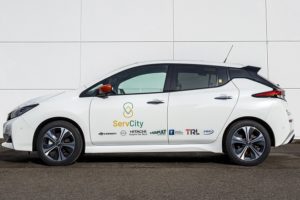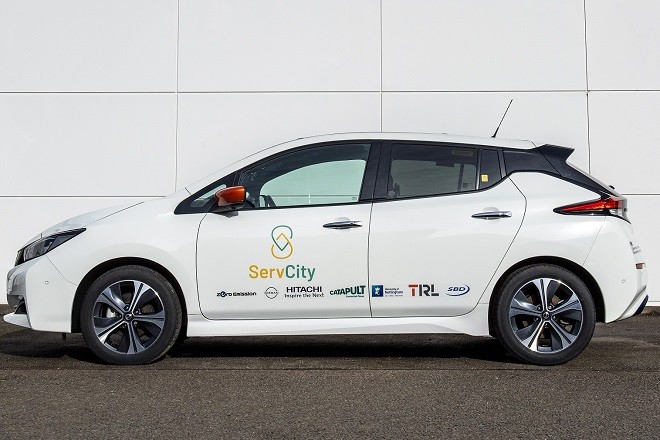- Nissan, Hitachi, and other industry leaders have partnered up on the UK’s latest autonomous mobility project, “ServCity”
- ServCity launched this month with the aim of helping cities determine how autonomous vehicle technologies can be harnessed and successfully deployed into complex urban environments
 Over the course of 30 months, five partners – Nissan, Hitachi, the Connected Places Catapult, TRL, and the University of Nottingham – will set out to develop a plan for overcoming current barriers to deploying autonomous vehicles in the UK.
Over the course of 30 months, five partners – Nissan, Hitachi, the Connected Places Catapult, TRL, and the University of Nottingham – will set out to develop a plan for overcoming current barriers to deploying autonomous vehicles in the UK.
Nick Blake Chief Innovation Strategist at Hitachi, said, “The team at Hitachi’s European research and development is focused on tackling the complex technical challenges involved in autonomous driving in congested urban environments.
Our role in the ServCity project will include developing the technology behind predicting – and safely responding to – other moving objects such as pedestrians, cyclists and cars, as well as delivering accurate and robust localisation solutions.”
The project joins various other initiatives up-and-down the country and is jointly funded by the UK government and industry.
Nadhim Zahawi, UK Minister of Business and Industry, said, “If society is to enjoy the benefits of self-driving vehicles, we need to ensure the technology can safely master a complex and lively modern city, with all its obstacles.
This project, backed by Government funding, will not only help make autonomous vehicles more user friendly but also give users confidence that they can respond quickly and safely and to all types of challenges they face on the roads.”
ServCity will combine test simulation, end-user experience research, and real-world trials to highlight how cities can tap into the vast potential of autonomous vehicles. The end-user research is designed to help autonomous vehicles be as accessible to as many people as possible.
Andrew Hart, Director of SBD Automotive, explains, “Robotaxis have the potential to fundamentally transform mobility for both consumers and the cities they operate in. The user experience lies at the heart of that transformation, as operators will need to carefully balance customer expectations with real-world technological constraints.”
An earlier project known as HumanDrive helped to lay the foundations for ServCity.
HumanDrive focused on improving autonomous driving in conditions that a human driver would typically encounter in both motorway and country settings. Such challenges included the usual lane navigation and correctly using roundabouts, but also things like high-speed country lanes without markings.
The HumanDrive project culminated in the Grand Drive where a fully-electric Nissan Leaf drove from Cranfield to Sunderland in the UK’s longest and most complex autonomous drive yet.












